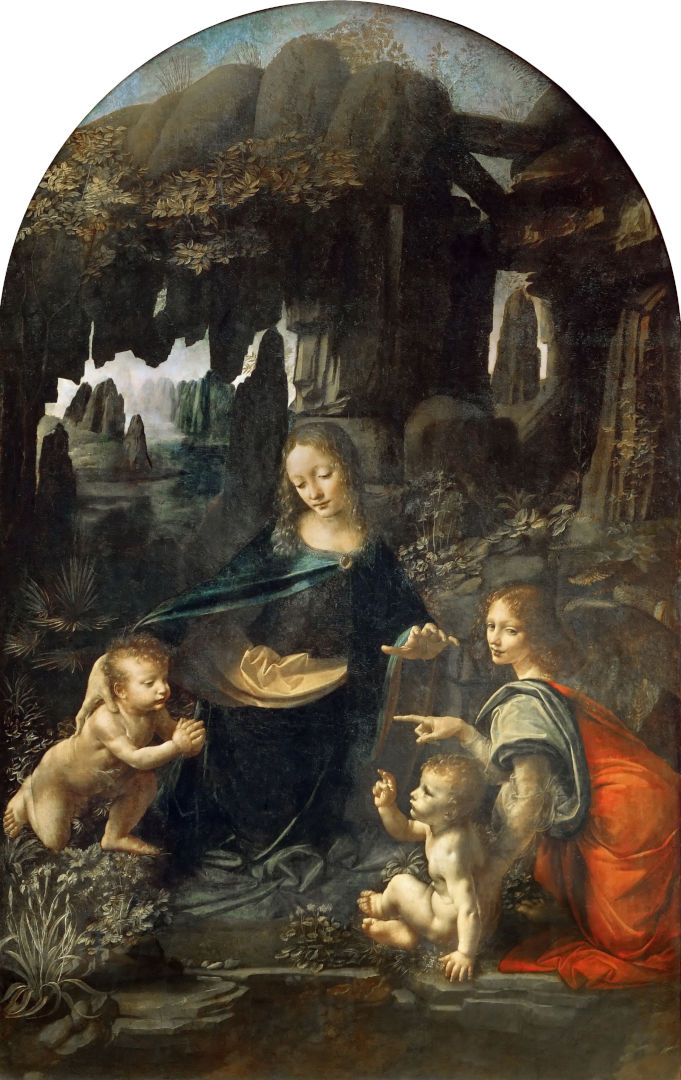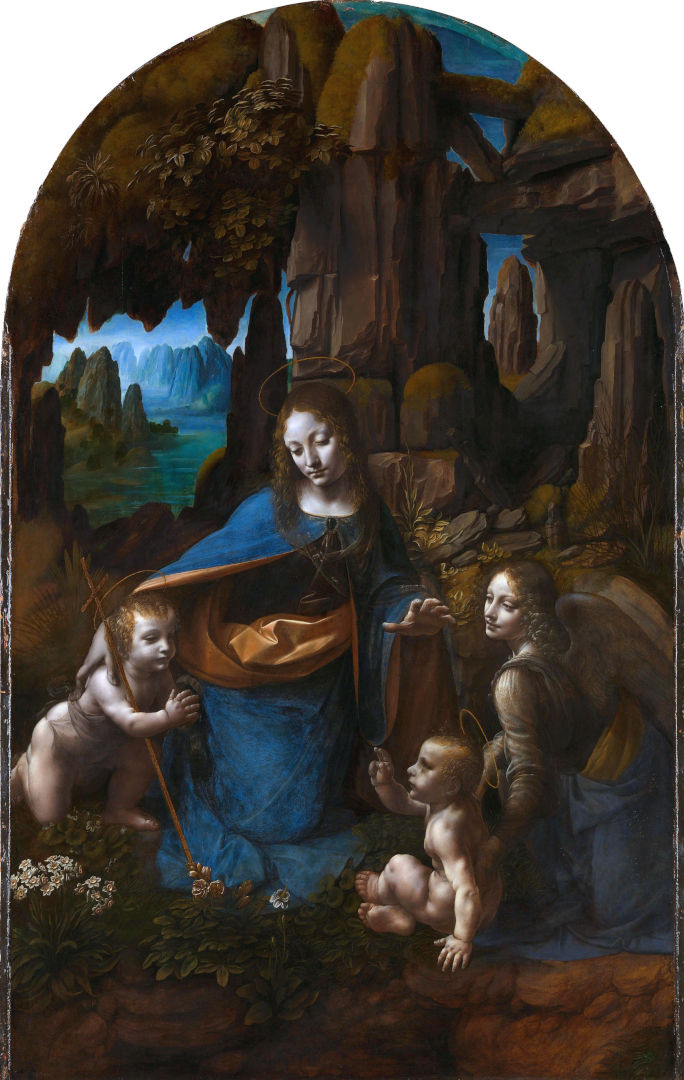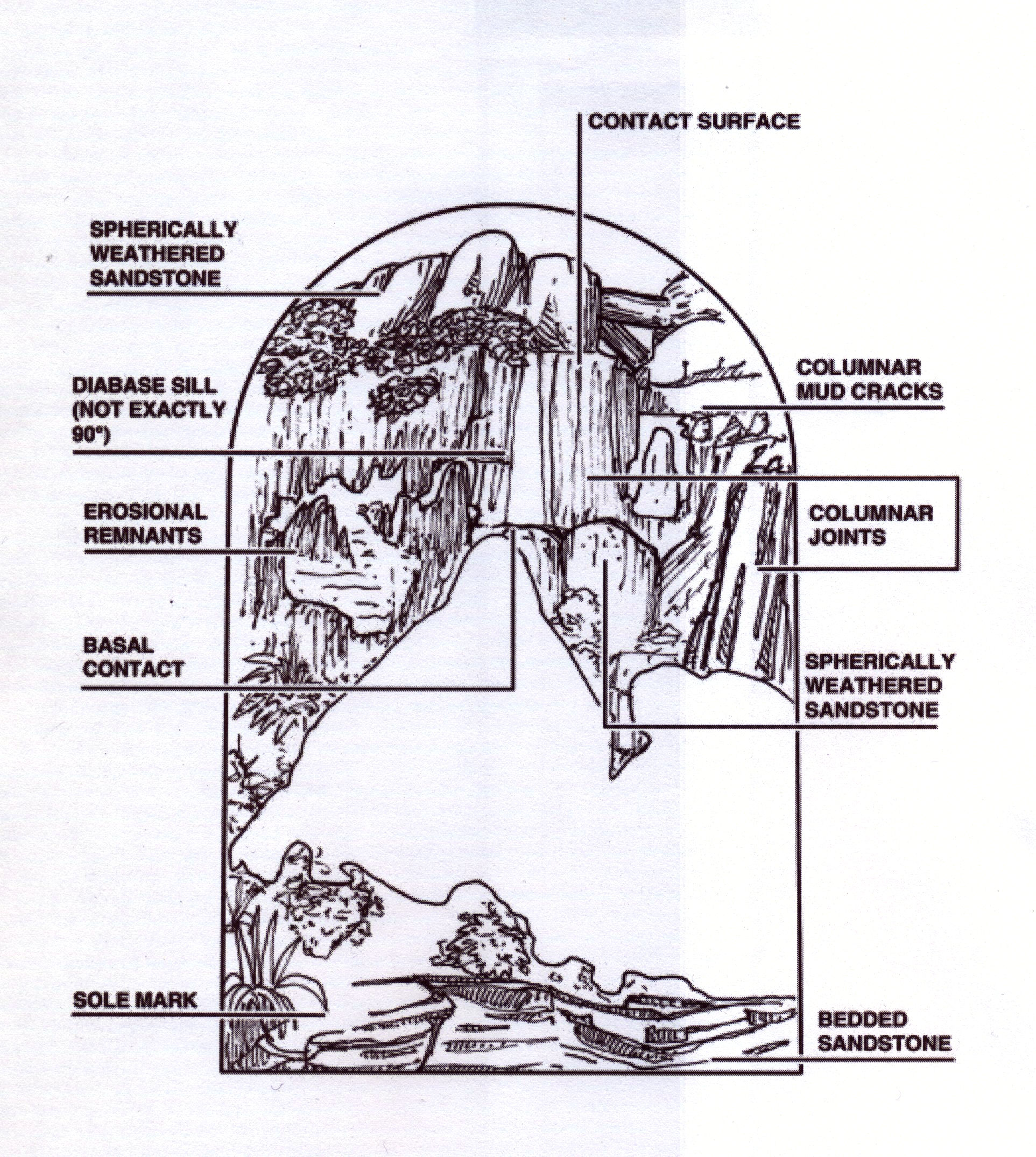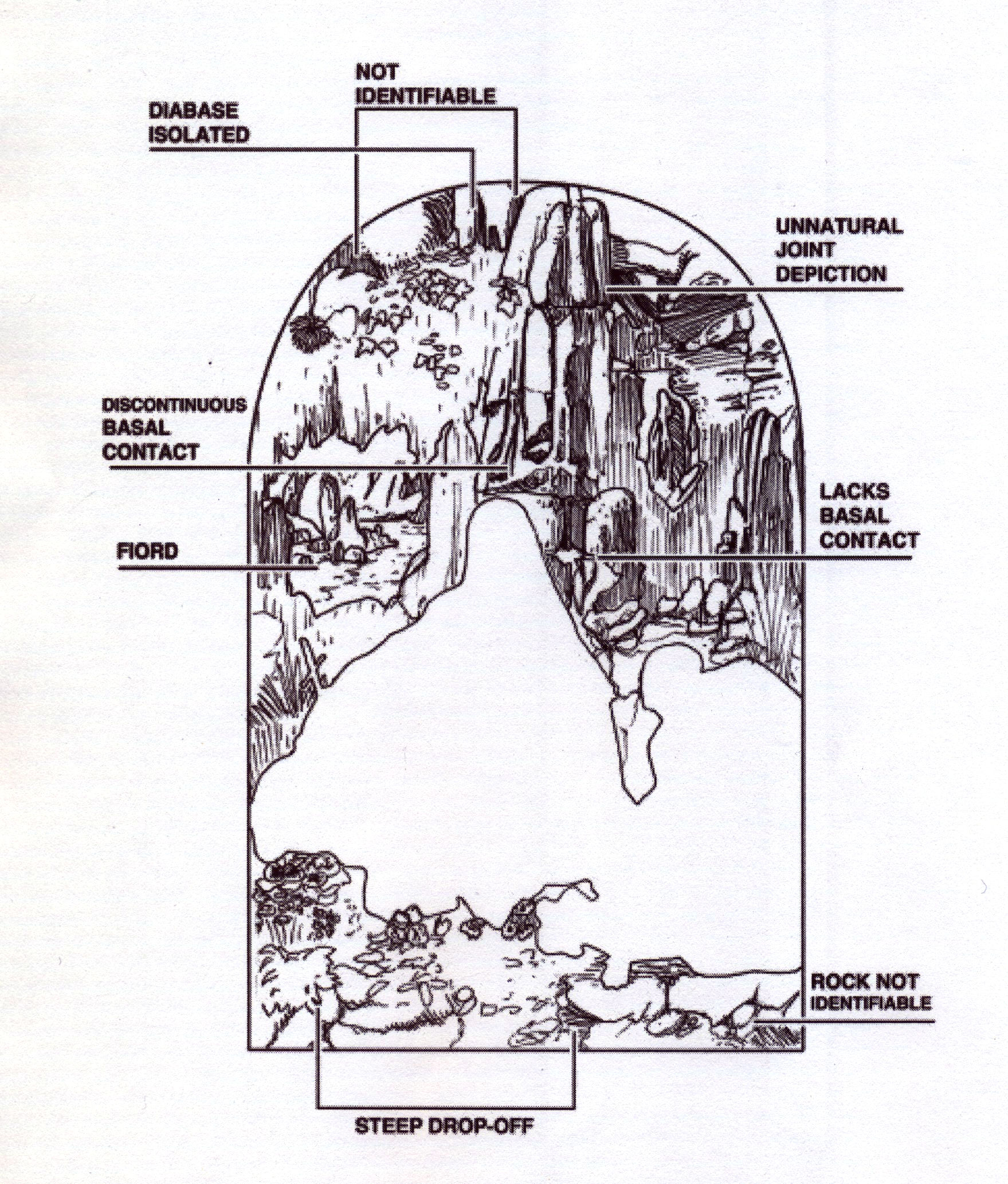|
In the
dedication of her book Tweeting Da Vinci
(Twittando da Vinci in the Italian edition),
Ann Pizzorusso, a geologist and expert in the Italian Renaissance, refers to Leonardo
Da Vinci, The Etruscan Priests, Virgilio and Dante as the Dream Team. But most
importantly, she dedicates the book to her mother for having instilled in her a
love of the Earth. Surely, since she was
a child, Ann Pizzorusso was a Nature lover, and we are not surprised that she
is a 360-degree geologist. Before turning her geological skill toward Leonardo
Da Vinci, she spent years drilling for oil, hunting for gems and cleaning up
pollution in soil and groundwater. Finally, she was attracted by the rocks in
one of the most magnetic paintings of the Italian Renaissance: The Virgin of
the Rocks. The “walk” among that rocks
led her to know even better the Italian genius, who, writes Ann, If he were alive today, would not just be on the cutting-edge of the art
scene; he would also be at the forefront of the technological revolution, the
internet, as well as scientific and medical advancements. But there is a lesser
known aspect of Leonardo: he was a fine geologist. He not only understood the
formation of rocks, but also was able to depict them accurately to the point,
writes Ann, that we can use geology as a diagnostic tool to determine the
authenticity of works created by him. We are pleased then to have this conversation
with Ann who has shown a great love for our country and for one of the most
widely recognized geniuses in the world.

|
|
Fig. a: Louvre Version
|

|
|
Fig. b: National Gallery of London Version
|
Ann, first of all, apart from the geological and cultural perspective, is
there anything personal that links you to Italy?
I am 100 per
cent Italian-American. My parents were both born in Italy and came to the
United States when they were children. My mother was born in Pratola Peligna in
Abruzzo and my father was born in Amalfi. So I have the perfect combination of
“mare e montagna”. My mother was influenced by nature in Abruzzo. When I was a
child, she took me to gather mushrooms in the forest, clams and crabs at the
seashore and every type of green that grew. For the USA at that time, this was
very unusual because everyone ate fast food and food full of sugar and
chemicals. When I came home from school she would have a “bell’insalata”
prepared for me. I was very embarrassed in front of my friends because no one
ate things like that. Now this is very much alla
moda in America and I enjoy good health because of the wonderful, fresh
food my mother gathered, cooked and served me. As for the water, she knew where
the springs were and we would go collect it in bottles. It was a very intimate
thing and I noticed how much she appreciated this marvellous, healthy water
that gushed forth from the earth. Her knowledge and respect regarding nature
impacted me greatly.
Is there any mineral water sources landscape that attracts you in
particular?
I must admit
I love the volcanic waters on the Island of Ischia. There are many reasons for
this. The first being that my knees often are painful and when I go to “le
terme” and take the waters, I do not feel any pain. I have had all the
treatments, mud, inhalation, sauna, grottoes and my whole body feels wonderful
after these treatments. I wrote extensively about these waters, which were
appreciated since the Greeks arrived on the island in 750 B.C. One of the
secret ingredients, which make the waters so effective is low-level
radioactivity, discovered by Marie Curie when she came to the island in 1918.
While I love Ischia, I also go to the spas throughout Italy as they are places which
are restorative to the body and soul.
Before turning to Leonardo, tell us something peculiar about the other
members of the team: Virgilio, Dante and the Etruscan Priests…
The Dream
Team appealed to me because they all had a connection to the Earth. For
instance, I wrote about Dante’s knowledge of gemmology. He used gems as
metaphors in the Divine Comedy. His knowledge was so profound that literary
scholars did not realize the extent of his knowledge. I wrote the first
treatise on Dante’s use of gems in the Divine Comedy and it opened doors for
further study by gemmologists and geologists.
As for
Virgil, he used the volcanic landscape of the Campi Flegrei, near Naples as the
model for the Underworld. Once again,
literary critics assumed Virgil’s Underworld was a figment of his imagination.
In fact it was not, all the places are real and visible today. Virgil walked in the burning fields, saw Lake
Averno, the Antro della Sibilla, Cuma
and Miseno. Even today, one can enter a grotto and see an underground river, a
model for the River Styx.
The Etruscan
Priests were acutely aware of the signals nature was sending i.e. lightning,
thunder, storms, birds, etc. as they needed to interpret these signs so they
could understand the divine messages. The priests used sacred geography to map
out the north-south, east-west directions (cardo-decumanus) before a city could
be developed. There were also priests that specialized in interpreting
lightning. The Etruscans kept detailed catalogs of lightning size, shape and
color. We now know that these types of lightning exist and are especially
prevalent in volcanic areas such as Etruria.
Your book is a jewel in my library and I believe in the library of many others.
Tweeting Da Vinci won several prizes, including the cover designed by a young
Italian from Naples, Francesco Filippini. How it came the idea of writing it?
I started
writing various articles on geology and culture for fun. It was my professor of Dante Studies, the
great Professor John Freccero, who pushed me for many years to publish all my
works, because no one had ever done anything like this before and the articles
were very useful to scholars in many disciplines.
In your book, Leonardo Da Vinci is the guide to our beautiful country, as
Virgilio was for Dante, in his Divina Commedia.
Why did you choose him?
Leonardo is
my idol. He was, among many other things, the Father of Geology, although he
does not receive credit for it (I am working on it.). He travelled in many
areas of Italy looking at the geology and writing, sketching and making maps of
what he saw. I have followed in his footsteps, going (with my alpine guide, the
great Fulvio Casari) to places Leonardo visited in the Alps. It was a joyous experience for me and feel
close to Leonardo when I do my geology research but also when I do my artistic
research so he helps me in many disciplines.
Leonardo wrote: “Painter you should know that you cannot be good if you are
not a master universal enough to imitate with your art every kind of natural
form”. Are these words of great inspiration when we look at the Virgin of the
Rocks?
One of the
methods of determining a work of Leonardo is geological accuracy. He wrote about its importance and criticized
other artists such as Botticelli for their “bad landscapes”. Leonardo even
impressed on his students the importance of geological accuracy. He never
changed his style, so when you see a painting attributed to him with precise
geology and botany, you know you have an authentic work by da Vinci.
Please Ann, help us “to read” the
rocks behind the Virgin in the Louvre version…
Please go to
the Sketch in Fig. 1
What about
the rocks in the London version?
Please go to
the Sketch in Fig. 2
You have
also considered the botany in both versions and you are supported in this by a
leading horticulturalist, Prof. John Grimshaw….
Yes, I quote directly him: “and
to me there is a surprising—if not shocking—difference in the plants in the
landscape. In the French painting the
plants are beautifully rendered, with the detail one expects from the botanical
artist that Leonardo was: an Iris, Polemonium and Aquilegia are clearly
recognizable. Replacing the Iris in the
London version is a clump of apparent Narcissus tazetta—but it is no normal
daffodil. The flowers are good enough,
but they arise on bractose scapes, from a clump of plantain—like leaves. Next to this are two completely fantastical
plants that cannot be identified, and there are other oddities elsewhere in the
landscape. It seems that here Leonardo, the inveterate doodler and inventor,
has invented his own flowers for Paradise, and in the evolution of the painting
has translated the scene from and earthy to a heavenly location. It is nice to think that he envisaged
daffodils there”
If the
London version was not painted by Leonardo who did it, and what are the
motivations behind it?
The history of the two
paintings has baffled art historians for years and debates and arguments have
raged over the attribution of the Virgin of the Rocks in the National Gallery
to Leonardo da Vinci. This mystery, with attendant acrimony, is still going on
despite the fact that abundant testimony exists from a 25 year lawsuit over the
two paintings.
According to historical
records, the Brethren of the Immaculate Conception (Confraternity),
commissioned Leonardo and the brothers Ambrogio and Evangelista de Predis to
create an altarpiece for their chapel, San Francesco il Grande, in Milan in
1483 – a project estimated to cost some 800 lire to execute. The central feature of the altarpiece was to
be a portrait of the Virgin Mary and Child surrounded by angels, representing
the Immaculate Conception. Leonardo was to prepare the painting and the de
Predis brothers were to complete the frame. Though da Vinci completed the piece
by 1486, it remained uninstalled for some four years while the De Predis
brothers worked to finish its ornate frame.
In about 1490, the de Predis
brothers appealed for more money, citing that the frame alone had cost the
entire amount to which the artists had originally agreed. They asked that the
“oil painting of Our Lady” (Virgin of the Rocks) be withdrawn from the
commission as “others” had offered to purchase it, presumably for more
money.
The legal wrangling went on
for almost a quarter century. The exact
motivation is unclear because there were many claims and counterclaims. Leonardo and the de Predis brothers wanted
more money, while the Confraternity argued that the picture did not fulfil
their request of a painting representing the Immaculate Conception of the
Blessed Virgin, and therefore called the painting “unfinished” to bolster their
position in court.
Perhaps the Confraternity
could not accept Leonardo’s painting because the conditions of funding the
project were very specific and would not allow for variation or
substitution. Ambrogio de Predis found
this out when he petitioned the court in 1503, as the Confraternity was not
willing to accept the painting and Leonardo was unwilling to drastically alter
the one he had completed nor paint another.
Charles Hope, expert in
notarial Latin and director of the Warburg Institute in London has completed an
exhaustive study of these arcane court documents and tells us what happened
next. “Leonardo and the de Predis
brothers had hoped to receive at least 400 lire, and the patrons initially
offered only 100. In 1506 they raised
this figure to 200, on the condition that the picture was finished. Had this happened, Leonardo would evidently
have considered himself out of pocket, even though after 1506 he and Ambrogio
did indeed receive 200 lire. Although
the documents are silent on this point, it looks as if the patrons finally
accepted the second version, for a reduced fee, and returned the original to
Leonardo, who was able to recoup his full fee, including Ambrogio’s share, by
selling it to a third party. How and
when it entered the French royal collection has been much debated. But it may well be relevant that in 1508
Milan was under French control and that Leonardo had been given a salary by
Louis XII. Although he had proposed to
Ambrogio that they should see the copy and share the proceeds, it is certain
that the copy remained in the church, and it is this copy that was later
acquired by the National Gallery.”
Once the legal matter had
settled, the copy, now in the National Gallery was painted. Charles Hope states “Leonardo’s own
involvement, if there was any at all, is likely to have been very limited.”
Professor Hope echoes many art historians who have questioned the attribution
to Leonardo of the National Gallery work.
In the ensuing years, the
artists went their separate ways. The de Predis brothers remained in Milan and
Leonardo lived out his last years as guest of the King of France, Francis I, in
his chateau in the Loire Valley. Each
painting went its separate way. The
Louvre version is first mentioned as part of the royal collection at
Fontainebleau in 1625. The London
version, which remained in the church of San Francesco il Grande until 1781,
was taken to the hospital of Santa Caterina in Milan and sold in 1785 to the
English painter Gavin Hamilton. It was
in the collection of the Marquis of Landsdown, then the Earl of Suffolk, for
nearly a century before entering the National Gallery in
1880.
How Art
experts received your hypothesis about the two Virgin of the Rocks?
All of the great Leonardo
scholars agree with me and were thrilled to see my innovative approach which is
not “opinion” but a methodology which can be seen by looking at the painting
and proved by reading Leonardo’s notes.
Can we
consider this debate a symbol of a widest debate between Art and Science, in
the sense that it will be appropriate in our times to go back to Leonardo as he
was representing the two cultures interwoven, while today they are separated?
I do not think this is a
debate between Art and Science, but a forward pass toward unification.
Remember, in the Renaissance, art and science were studied together. Today, we
are linear thinkers, we don’t do much multi-disciplinary work. Even in the age
of computers, artists, designers and creative people are vitally needed to work
alongside engineers. In fact, Walter Isaacson, in his marvellous book, the
Innovators, talks about the technical advancements which were created by
multi-disciplinary teams. I think we are quickly approaching the Renaissance
ideal once again.
Finally,
tell us something about the Codex Hammer, one of the Da Vinci Codes less
popular …
The Codex Leicester was purchased
by the businessman Armand Hammer who changed the name to the Codex Hammer. When
Bill Gates bought the notebook in 1994 for $30 million, he changed the name
back to Codex Leicester (1508-10). Prior
to taking possession of it, Mr. Gates displayed it at the American Museum of
Natural History in New York. I was honoured to be one of the speakers at the
museum who discussed Leonardo as geologist. The Codex notes, geology, water
studies, fossils, air and celestial light.

|
|
Fig. 1: Louvre Version
|

|
|
Fig. 2: National Gallery of London Version
|
Discussion of two versions
The Virgin
of the Rocks in the Louvre is a geologic tour-de-force because of the subtlety
with which Leonardo represents a complicated geological assemblage. At the top of the grotto are rounded
(spherically weathered) mounds of sandstone, a sedimentary rock. Above the Virgin’s head is a rock, which
extends upward with distinct vertical relief.
This is diabase, an igneous rock that was injected as a molten liquid
and spread over the sandstone, forming a band (or a sill) several feet
high. The rock contracted as it cooled,
forming vertical (columnar) joints.
Directly above the Virgin’s head is a horizontal crack in the rocks
called a basal or bottom contact. This is the seam between the diabase above
and the sandstone below. The column of
diabase extends upward until it meets another horizontal contact surface and
the rock formation changes to sandstone at the top of the grotto.
The rocks
that extend from below the basal contact line near the Virgin’s head down to
the foreground are sandstone, like those at the top of the grotto. The texture and rounded weathering pattern of
the sandstone are the same below the basal contact as they are at the top of
the grotto. In the foreground, the sandstone has not been heavily weathered and
has therefore retained its highly defined horizontally layered (or bedded)
structure. The diabase sill at the
center of the formation is harder and less prone to erosion, hence its sharp
edges and vertical relief. Leonardo is able to capture this contrast first, by
having an understanding of how the rocks actually look and then representing
this appearance realistically through his use of light and colour. Leonardo’s use of sfumato, a shading
technique he mastered, gives the realistic feeling of a moist, musty grotto.
The jagged
rocks rising from a blue-gray mist in the background are remnants of erosional
processes that stripped away the overlying softer rock and left the harder rock
intact. These formations have been
subtly yet accurately depicted, consistent with Leonardo’s unwavering
commitment to geological realism.
Especially
intriguing is Leonardo’s placement of vegetation in the picture-- not simply to
achieve aesthetic assemblage-- but rather, to place the plants in areas where
they grew naturally. At the top of the
grotto, the sandstone would have decomposed sufficiently to allow roots to take
hold. This is true for the plants
growing in the foreground and in the background. No plants are growing out of the diabase, however,
since it is too hard and resistant to erosion to provide a suitable habitat for
plant growth.
An observer
with some knowledge of geology would find that the rock formations represented
in the National Gallery work do not correspond to nature, as do most of
Leonardo’s drawings and paintings. All
we know about da Vinci suggests that he had too much respect for natural beauty
to portray it inaccurately. The rocks in the National Gallery version miss the
point geologically. Looking at the
painting, above the Virgin’s head, there is no change in the texture of the
rocks to indicate the presence of the diabase sill. The vertical joint patterns
continue upward without interruption.
The type of rock remains constant, in comparison to the changes in rock form
in the Louvre work. In the foreground,
the rocks are not finely bedded and in fact they are simply not
identifiable. The lack of knowledge on
the part of the painter of the National Gallery work seems to exclude the
possibility that it was Leonardo.
If we take
it a step further, let’s look at the time line of three of Leonardo’s works:
Virgin of the Rocks in the Louvre, painted ca. 1483-86, the National Gallery
version ca. 1495-1508 and the Virgin and St. Anne in 1510. It seems unlikely
that Leonardo changed his geologic style for just one painting—that in the
National Gallery—considering that the Virgin and St. Anne, finished after the
London painting, is a much more detailed and geologically complex picture.
In the end,
Da Vinci’s extraordinary knowledge provided us with an unbiased method of
distinguishing his work from that of his many imitators and followers. Precise
geology is an index to authenticity. It
can serve as Leonardo’s inimitable trademark as no other artist of his time
understood geology so well.
Bibliography:
PIZZORUSSO 2014
Ann C. Pizzorusso, Tweeting Da Vinci, New York, Da Vinci Press, 2014 (VII, 233 p.)
|
